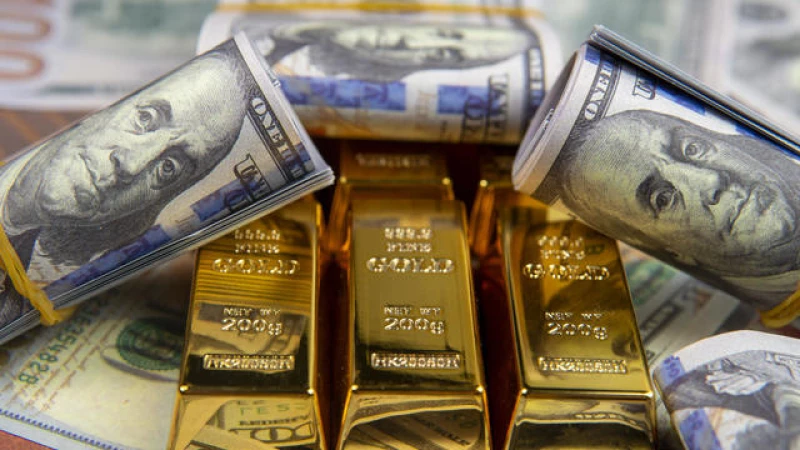The war against inflation was never going to be easy, but the latest consumer price index data demonstrates just how tough a fight the Federal Reserve is facing. In the months ahead, the outcome of that battle will have major implications for your finances.
New labor data shows that U.S. prices in March rose 3.5% from a year ago, hotter than economists expected and the third straight month that inflation has accelerated. Gasoline prices and rent contributed over half the monthly increase, the government said on Wednesday.
The upshot: The Fed's ongoing campaign to tame inflation is far from over. That has left consumers and investors wondering if the central bank, who until recently were widely expected to cut its benchmark interest rate in June, could push back that timeline several months, or even into 2025.
Fed Chairman Jerome Powell has underscored that policy makers are closely monitoring inflation data to assess their progress in nudging it back toward their 2% annual rate, its level prior to the pandemic-fueled surge in prices. A premature move to cut the federal funds rate risks uncorking additional inflationary pressures, he has warned.
Addressing those concerns, another Fed official said last week that the central bank might not cut rates at all in 2024 "if we continue to see inflation moving sideways."
Reasons Behind the Increase in Inflation
Two main factors contributing to stronger-than-expected inflation in March were gasoline prices and rent. Rising prices at the pump stems partly to growing U.S. demand, according to the AAA, which said the current national average of $3.62 a gallon is about 6.6% higher than a month ago.
Gas prices are also rising because of mounting geopolitical tensions in Russia and the Middle East, with Brent crude earlier this month surging beyond $90 a barrel and the U.S. benchmark topping $86.
Rents also remain sticky amid the nation's tight housing supply. A few other items also contributed to the acceleration, including car insurance, which surged a whopping 22.2% from a year earlier. Insurers have been hiking premiums to offset their rising costs due to extreme weather and the higher cost of new automobiles.
How Could This Affect the Fed's Rate Decision?
Hiking interest rates is the Fed's most effective weapon against inflation. That's because businesses and consumers put the brakes on spending when it costs more to borrow money, and that effectively dampens demand for goods and services, which in turn can help lower inflation.
Analysis on Federal Reserve Interest Rate in 2024
Despite the persistent inflation in 2024, economists believe that the Federal Reserve has less incentive to lower interest rates in the near future.
Current Federal Reserve Interest Rate
The current federal funds rate, which represents the interest banks charge each other for short-term loans, ranges between 5.25% and 5.5%.
Since March 2022, the Fed has increased its rate 11 times in an effort to combat inflation. This has led to a rise in borrowing costs, impacting rates for credit cards, mortgages, and other loans significantly over the past couple of years.
Predictions for Federal Reserve Rate Cuts in 2024
However, in light of the most recent inflation data, experts are revising their expectations for rate cuts.
"June is likely no longer a possibility for a rate cut," stated Elyse Ausenbaugh, the global investment strategist at J.P. Morgan Global Wealth Management, in a recent email.
If the Fed doesn't cut in June, policy makers are unlikely to reduce rates until September because little economic data is released between their June and July meetings that could alter their thinking, noted Ryan Sweet, chief U.S. economist at Oxford Economics, in a research note on Wednesday.
How could a delayed rate cut impact your money?
The initial impact was felt Wednesday in the stock market, with Wall Street sending shares sharply lower.
Expectations the Fed would soon cut rates had fueled a 20% surge in the S&P 500 since Halloween. That's because lower rates would help bolster spending from consumers and corporations, which in turn would encourage investors to pay higher prices for stocks, bonds, cryptocurrencies and other investments.
But with that looking less likely in the near-term, investors pulled back on Wednesday. If rate cuts come later in 2024 than expected, consumers could face higher borrowing costs for a longer period. Auto loans, credit card rates and other loans are based on the Fed's benchmark rate, so a higher rate means that consumers won't get a break anytime soon.
Mortgage rates, which are hovering at about 7%, are also influenced by the Fed benchmark rate, although they also reflect other factors, like bond yields and inflation. Rates for home loans are likely to be unchanged in the near-term due to factors like the strong job market and housing demand, according to Lawrence Yun, chief economist at the National Association of Realtors.
Looking on the Bright Side: High Interest Rates Benefit Savers
If there's a silver lining, it's for savers given that some high-interest savings accounts, certificates of deposit, and other savings vehicles now offer interest rates of 5% or more. If the Fed delays cutting rates, it's likely savers will be able to find favorable rates for longer in 2024.
That means consumers could sock away some cash in a high-interest savings account or CD and earn a rate that's 1.5 percentage points to 2 percentage points higher than the current inflation rate. This is better than leaving the money in a checking account that might be providing little to no interest, which effectively erodes the value of your money due to the impact of inflation.







